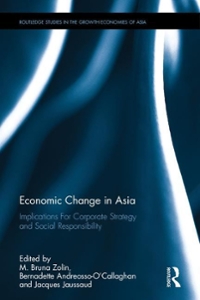Question
1. Which of the following is an example of a monopolisticallycompetitive industry? A. wheat farming B. colleges and universities C. the domestic auto industry D.
1. Which of the following is an example of a monopolisticallycompetitive industry?
| A. | wheat farming | |
| B. | colleges and universities | |
| C. | the domestic auto industry
| |
| D. | the local electricity producer
|
2. In game theory a choice that is optimal for a firm no matter what its competitors do is referred to as
| A. | the pay off
| |
| B. | super optimal | |
| C. | the equilibrium of the game
| |
| D. | the dominant strategy |
3. After graduating, you have decided to accept a position working at the Bureau of Labor Statistics for $ 33,000 a year. The other offers you received were for $ 22,000, $ 28,000, $ 19,000. What is the opportunity cost of accepting the position at the Bureau of Labor Statistics?
| A. | $ 28,000
| |
| B. | $ 22,000
| |
| C. | $ 19,000
| |
| D. | $ 69,000 |
4. Diminishing marginal utility means that
| A. | the utility from one hamburger is greater that the utility from two hamburgers | |
| B. | Ralph will enjoy his secondhamburger less than the first one | |
| C. | the utility from eating two hamburgers will be more than twice the utility from eating the first one
| |
| D. | the price of two hamburgers is less than twice the price of one |
5. Which of the following will not increase the demand for hotdogs (i.e. shift the demand curve to the right)
| A. | An increase in price of hamburgers which are a substitute to hotdogs | |
| B. | An expectation of a decline in the price of hotdogs in the future | |
| C. | A decrease in the price of a complement such as hotdog buns | |
| D. | The price of hotdogs falls |
6. The alternative combinations of two goods that a consumer can purchase with a specific money income is shown by:
| A. | A demand curve
| |
| B. | A production possibility curve
| |
| C. | A budget line | |
| D. | An indifference curve
|
7. A monopolistically competitive industry combines elements of both pure competition and monopoly. What makes this firm have some elements of monopoly?
| A. | The likelihood of collusion
| |
| B. | Product differentiation | |
| C. | Mutual interdependence in decision making
| |
| D. | High entry barriers |
8. Who is primarily responsible for making economic decisions in a market economy?
| A. | big business
| |
| B. | market regulators
| |
| C. | individuals | |
| D. | the central government
|
9. An increase in the price of apples would lead to
| A. | A shift in the supply curve of apples | |
| B. | An increased demand for oranges
| |
| C. | An increased supply of apples
| |
| D. | A reduction in the price of inputs used in orange production
|
10. If price elasticity of demand for a good is 4.0, then a 10 percent increase in price would result in a
| A. | 4.0 percent decrease in the quantity demanded | |
| B. | 10 percent decrease in the quantity demanded
| |
| C. | 40 percent decrease in quantity demanded
| |
| D. | 400 percent decrease in the quantity demanded |
11. The invisible hand works to promote general well being in the economy primarily through
| A. | Self interest
| |
| B. | Altruism | |
| C. | Government intervention | |
| D. | The political process |
12. Which of the following is true about a monopoly
| A. | A monopoly firm us a price maker and has no supply curve | |
| B. | A monopoly firms is a price maker and has a downward sloping supply curve
| |
| C. | A monopoly firm is a price maker and has an upward sloping supply curve.
| |
| D. | A monopoly firm is a price taker and has no supply curve |
Step by Step Solution
There are 3 Steps involved in it
Step: 1

Get Instant Access to Expert-Tailored Solutions
See step-by-step solutions with expert insights and AI powered tools for academic success
Step: 2

Step: 3

Ace Your Homework with AI
Get the answers you need in no time with our AI-driven, step-by-step assistance
Get Started


